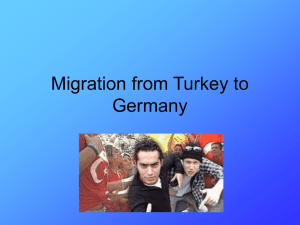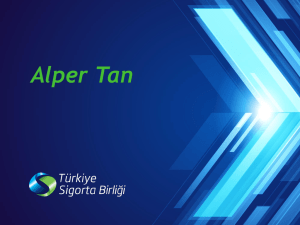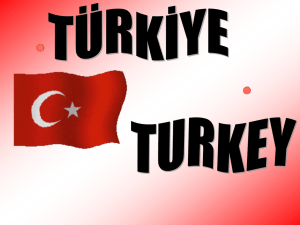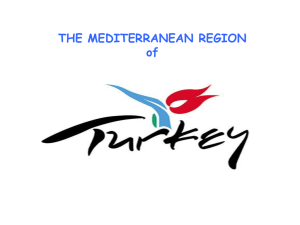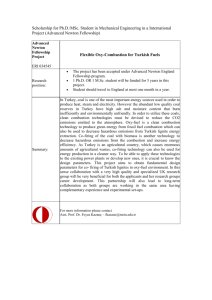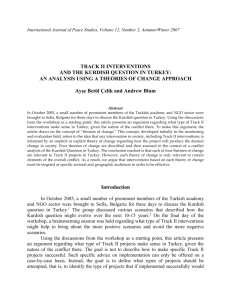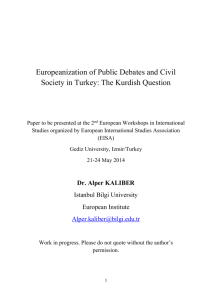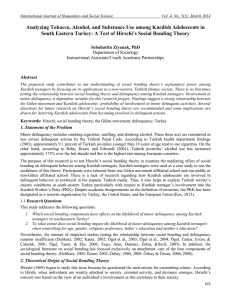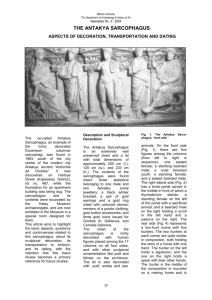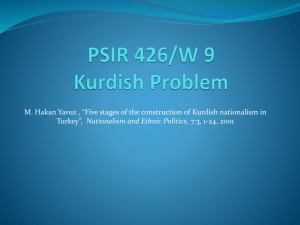BEYOND TOLERANCE: Re/Presenting Religious Difference IN THE
advertisement
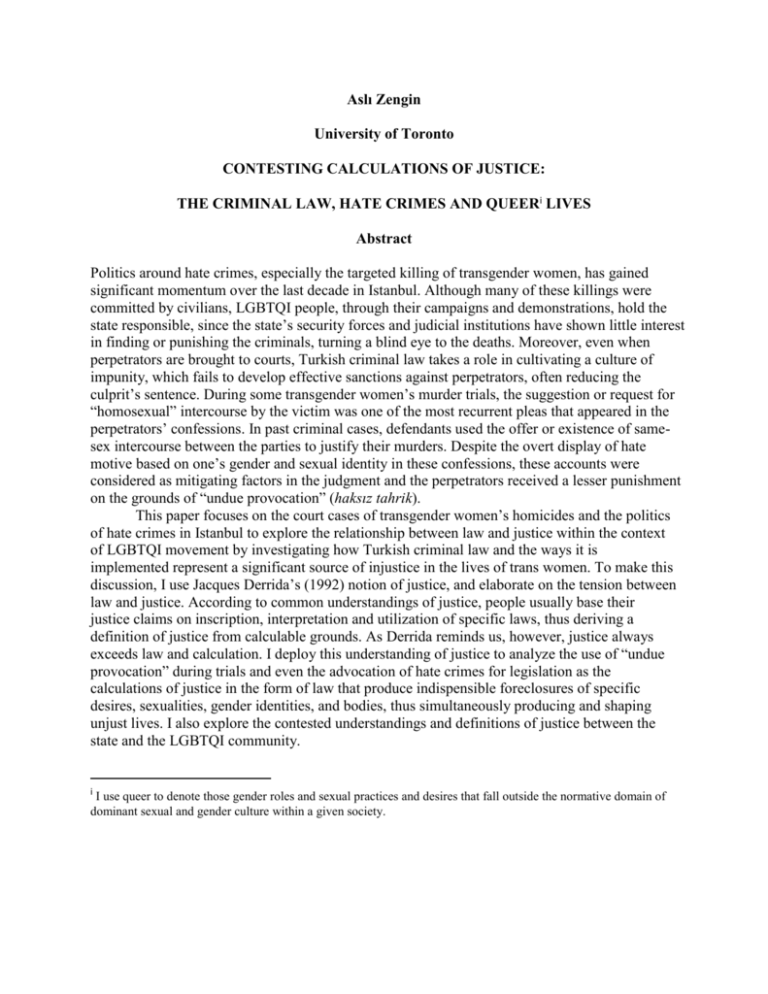
Aslı Zengin University of Toronto CONTESTING CALCULATIONS OF JUSTICE: THE CRIMINAL LAW, HATE CRIMES AND QUEERi LIVES Abstract Politics around hate crimes, especially the targeted killing of transgender women, has gained significant momentum over the last decade in Istanbul. Although many of these killings were committed by civilians, LGBTQI people, through their campaigns and demonstrations, hold the state responsible, since the state’s security forces and judicial institutions have shown little interest in finding or punishing the criminals, turning a blind eye to the deaths. Moreover, even when perpetrators are brought to courts, Turkish criminal law takes a role in cultivating a culture of impunity, which fails to develop effective sanctions against perpetrators, often reducing the culprit’s sentence. During some transgender women’s murder trials, the suggestion or request for “homosexual” intercourse by the victim was one of the most recurrent pleas that appeared in the perpetrators’ confessions. In past criminal cases, defendants used the offer or existence of samesex intercourse between the parties to justify their murders. Despite the overt display of hate motive based on one’s gender and sexual identity in these confessions, these accounts were considered as mitigating factors in the judgment and the perpetrators received a lesser punishment on the grounds of “undue provocation” (haksız tahrik). This paper focuses on the court cases of transgender women’s homicides and the politics of hate crimes in Istanbul to explore the relationship between law and justice within the context of LGBTQI movement by investigating how Turkish criminal law and the ways it is implemented represent a significant source of injustice in the lives of trans women. To make this discussion, I use Jacques Derrida’s (1992) notion of justice, and elaborate on the tension between law and justice. According to common understandings of justice, people usually base their justice claims on inscription, interpretation and utilization of specific laws, thus deriving a definition of justice from calculable grounds. As Derrida reminds us, however, justice always exceeds law and calculation. I deploy this understanding of justice to analyze the use of “undue provocation” during trials and even the advocation of hate crimes for legislation as the calculations of justice in the form of law that produce indispensible foreclosures of specific desires, sexualities, gender identities, and bodies, thus simultaneously producing and shaping unjust lives. I also explore the contested understandings and definitions of justice between the state and the LGBTQI community. i I use queer to denote those gender roles and sexual practices and desires that fall outside the normative domain of dominant sexual and gender culture within a given society. Emine Gökçen Yüksel (Universität der Bundeswehr Munich), Stephan Stetter (Universität der Bundeswehr Munich) and Jochen Walter (Universität Bielefeld) “Modern Female Subjectivities and the Spatial Negotiation of Gender Norms” Abstract Abstract: In our article we analyze how and to what degree gender norms in Turkey are transformed or reified in light of a persistent gap between national/global constitutional and legal provisions that promote gender equality, on the one hand, and a seemingly resistant everyday reality, on the other. Our analysis is based on a qualitative case study on women’s positioning in higher education, which we undertook in the Turkish province of Hatay. While our research confirms that such a gap persists, we nevertheless detect meaningful transformations of gender norms in everyday practice. Our research indicates that such transformations occur in particular through everyday spatial practices, inter alia through what we refer to as local tactics of mobility by women seeking higher education. While there is no linear and direct diffusion of gender norms from the global/national to the local, we nevertheless observe significant global/local interplays to which these local norm transformations relate. We detect such interplays – drawing here from theories of world society and global governmentality – in in the sphere of higher education in Hatay. Specifically, we observe a diffusion of forms of modern subjectivities through which women in Hatay locate themselves, e.g. through spatial practices, in relation to a world society shaped by societal differentiation and social exclusion. We conceive of these spatial practices as technologies of the Self, which engender modern female subjectivities. Transformations or reifications of gender norms in Hatay are thus not so much the result of a direct diffusion of global gender norms. They are rather triggered indirectly through (spatial) practices on the local level that are, in turn, embedded within a world societal horizon that promotes modern subjectivities. 10th Sakıp Sabancı International Research Award Winning Articles Mahiye Seçil Dağtaş University of Waterloo BEYOND TOLERANCE: RE/PRESENTING RELIGIOUS DIFFERENCE IN THE CASE OF THE ANTAKYA CHOIR OF CIVILIZATIONS Abstract Over the past decade, there has been a shift in the political language of the Turkish state concerning the legal, cultural, and political recognition of groups and identifications that had hitherto been marginalized for defying the homogeneously imagined Turkish nation and its Sunni identity. In this article, I explore how this language is mediated through aesthetic and political representations of religion and culture, and demonstrate the possibilities and predicaments of these representations in actualizing togetherness at Turkey’s national margins. In particular, I examine the local, national, and international staging of religious difference as “tolerance” in Antakya, near Turkey’s border with Syria, and address the implications of these representations for the already existing and historically conditioned relationships between the city’s bilingual (Arabic-Turkish) Jewish, Orthodox Christian, Sunni and Alawi populations. My subject of analysis is the Antakya Choir of Civilizations, a multi-religious choral ensemble founded in 2007 with the involvement of community leaders and the support of the provincial governorship to celebrate Antakya’s ethno-religious “diversity.” Drawing on twelve months of fieldwork in Antakya between 2010 and 2011, part of which included participant observation in various choir activities and interviews with its members, organizers, and audience, I demonstrate how the choir objectifies the different and at times incommensurable musical traditions of Antakya’s religious communities as equally representable elements of the nation. I approach this objectification as a secular form of governance, one that positions itself against the secularist ideology of the Turkish Republic yet simultaneously maintains the latter’s emphasis on the nation and the nation-state as the sole and ultimate arbiter of differences. I argue that the paradoxes embedded in this processes of objectification reveal the limits of identity-based politics in incorporating the lived, affective, and historically evolving forms of relationality into political imaginations of co-existence. The article is divided into three parts. First, I describe the particular context in which “difference” has gained its new articulations in Turkey and become representable through the practice of collective singing in Antakya. Engaging with scholarly debates on secularism, pluralism, and tolerance in Turkey and elsewhere, I reflect on how these articulations redraw communal boundaries in their very attempt to bridge divides and what the specifics are of this redrawing in the Turkish context. In the second part, I give an ethnographic description of a scene from a concert given by the Antakya Choir, through which I discuss its affective, aesthetic, and sensorial politics of secularism. The final part of the article focuses on the multiple registers and appearances of tolerance, as understood, extended, and exceeded by the words and practices of its former and current members. In this section, I identify the paradoxes encountered and negotiated by different groups in the Choir, pointing to a diverse realm of attachments, frictions, and power. This realm, I suggest, pushes us to rethink what co-existence might mean and how togetherness can be achieved beyond the language of tolerance, secularism, and pluralism as well as of national unity. Haydar Darıcı University of Michigan "Encounters in the Shadow of War: Turkey’s Kurdish Region" Abstract This essay aims at rethinking the issue of social reconciliation in Turkey. Based on ethnographic fieldwork conducted in Cizre, a town in Turkey’s Kurdish region, this essay explores the encounters in physical proximity between Kurds and Turks as well as between different factions of the Kurdish community, taking place mainly in three spaces: schools, streets and mountains. I show that these encounters occur with the weight of a long history of the war in the region and are mediated by the state (materially and ideologically) as well as the Kurdish resistance movement. I further discuss how the lived experience of Turks in Cizre transforms their discourse about and relationship with Kurds. Finally, I discuss how the war and the ongoing Kurdish struggle have fragmented the Kurdish community and how the conflicts between different factions shape and are manifested in everyday encounters. Anoush Tamar Suni University of California ""The Ruin as Archive: Landscape and Memory in Anatolia"." Abstract Though documents relating to the Armenian Genocide of 1915 can be found in archives around the world, in contemporary Turkey, in place of an official archive documenting the genocide, there is an active campaign of denial. In the absence of an archive in the traditional sense, and with official discourse silent on state violence from the later years of the Ottoman empire, how else can we explore histories of destruction, suffering, and survival? In this paper I will suggest the possibility of reading ruins as an archive by focusing on the material remains of genocide and the stories and narratives that live on, through and around them. I propose to explore the ruins and rubble of genocide that subsist as crumbling stone structures left behind after the destruction of the communities that built them, and to read these ruins as an archive, a representation and documentation of a history of violence, expropriation, and assimilation. In my discussion I build on fieldwork conducted during the restoration project of two seventeenth-century stone fountains in Habap Village of Turkey’s Elazig province. As historical buildings built by an Armenian community who disappeared from the region a century ago and whose legacy has been officially forgotten in Turkey, the fountains represented a buried history and had been left to fall to ruin over the years. The restoration project aimed to accomplish not only the physical reconstitution of the fountains, but also the resurrection of that history. In Habap, the remains of the village’s Armenian Christian past are tangible and visible, as the fountains, as well as ruins of a monastery, a church, a graveyard, and the rubble of old houses dot the landscape of the contemporary Muslim Kurdish village which is now dominated by the towering dome of a newly constructed mosque. In this paper, I explore how the ruins of Habap represent what Ann Stoler terms “imperial debris,” as remains and continuation of legacies of violence at the end of empire. I explore in particular the lives of those who live among the ruins, and how these people interact with, narrate, and conceive of the history that produced these ruins. In particular, I explore the stories of the inhabitants of the village whose grandparents were converted Armenian orphans assimilated into Kurdish communities after the genocide. Building on Stoler’s point that ruins and debris are constructed, I explore the ways in which the ruins of Habap are implicated in occult economies of treasure-hunting for buried Armenian gold, linking them further to repressed histories of violence expressed in stories of curses and haunting.

